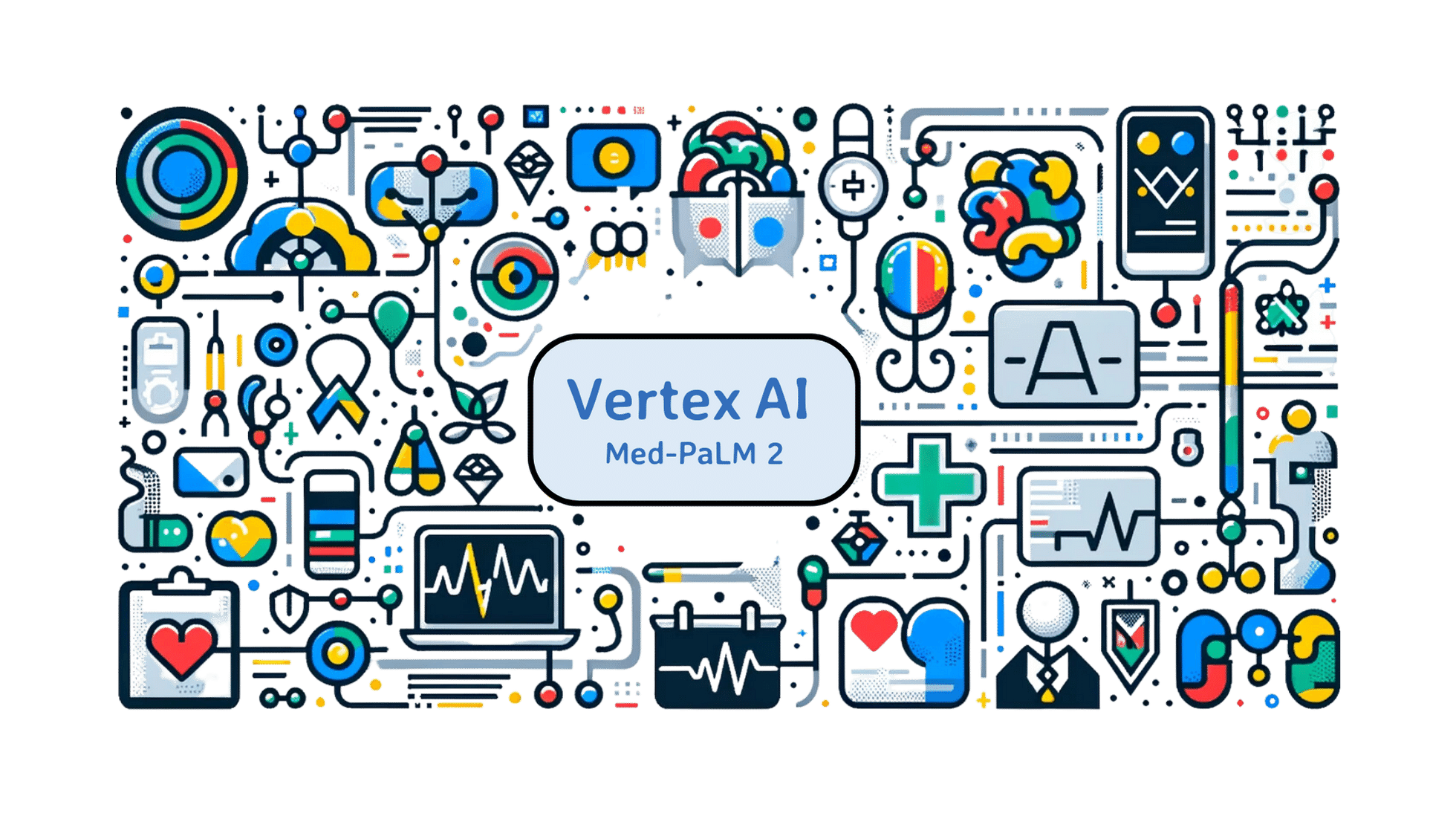The transformative potential of Artificial Intelligence (AI) in healthcare is increasingly becoming a focal point for clinicians, researchers, and policymakers alike. While AI has already demonstrated its prowess in fields like speech recognition and autonomous transportation, its application within healthcare is burgeoning. From automated image analyses in dermatology to clinical decision support systems, AI is poised to revolutionize various facets of medical practice. However, the healthcare sector faces unique challenges, such as accessibility issues, workforce shortages, and high operational costs, which pose barriers to the seamless integration of AI technologies.
In this context, the need for a structured approach to AI implementation in healthcare is imperative. Our Five-Stage Roadmap serves as a comprehensive guide for healthcare professionals and researchers aiming to develop and deploy AI predictive models. This roadmap is designed to navigate the complexities of AI integration, from the initial planning stages to ongoing evaluation and maintenance. It aligns with current research directions and addresses the sector's challenges, thereby aiming to accelerate the adoption of AI solutions for enhanced patient care and operational efficiencies.

Five-Step Roadmap
This Five-Stage Roadmap serves as a foundational framework for healthcare stakeholders to harness the full potential of AI, ensuring that its adoption is both clinically relevant and ethically responsible.
The roadmap explores various possibilities for the future of AI in healthcare, ranging from complete automation of diagnoses to aiding clinicians in making more informed decisions. By following this structured approach, healthcare organizations can not only improve patient outcomes but also achieve cost efficiencies, thereby contributing to the broader goal of making healthcare more accessible and effective for all.
1. Definition and Planning
 By meticulously clarifying the clinical question and identifying appropriate predictors, you lay a robust foundation for your AI model. These steps are particularly crucial in a regulated healthcare environment, where both clinical efficacy and regulatory compliance are paramount.
By meticulously clarifying the clinical question and identifying appropriate predictors, you lay a robust foundation for your AI model. These steps are particularly crucial in a regulated healthcare environment, where both clinical efficacy and regulatory compliance are paramount.
Clarifying the Clinical Question
- Problem Identification: The first step is to clearly identify the clinical problem or question that the AI model aims to address. This could range from diagnostic issues to treatment optimization.
- Stakeholder Involvement: Involve key stakeholders such as clinicians, healthcare administrators, and even patients to ensure that the clinical question is relevant and addresses a genuine need.
- Regulatory Considerations: Understand the regulatory landscape to ensure that the clinical question aligns with healthcare policies and guidelines. This may involve a review of existing laws and ethical considerations related to patient data and outcomes.
- Compliance: Ensure that the clinical question adheres to healthcare standards and regulations, such as HIPAA in the U.S., to maintain data privacy and security.
- Ethical Approvals: Depending on the jurisdiction, ethical approval from a relevant body may be required before proceeding with data collection and model development.
Identifying Appropriate Predictors
- Feature Selection: Identify the variables or features that are most relevant to the clinical question. These could be patient demographics, medical history, lab results, etc.
- Data Source Identification: Determine where these features will be sourced from, whether electronic health records (EHR), medical imaging, or other databases.
- Clinical Validation: Validate the selected predictors through clinical expertise to ensure they are meaningful and relevant to the clinical question.
- Data Governance: Ensure that the data used for predictors complies with data governance policies, including data quality and integrity checks.
- Patient Consent: In many jurisdictions, explicit patient consent is required for using their data, especially for research purposes.
- Predictor Standardization: Given that healthcare is highly regulated, the predictors used must often be standardized to meet specific regulatory guidelines, ensuring that they are universally interpretable and clinically meaningful.
Rationale
This initial stage acts as the bedrock for the development of AI models that effectively tackle specific clinical questions. By providing a solid foundation, healthcare professionals and researchers can ensure that their AI models are tailored to address the pressing issues that have the most significant impact on healthcare. This stage is vital in aligning with the study's objective of focusing on applications that not only revolutionize medical practice but also bring about meaningful improvements in patient care and outcomes. By setting the stage for targeted AI development, healthcare organizations can maximize the transformative potential of AI in addressing the most pressing challenges faced in the healthcare sector.
2. Data Preparation
 Data is at the core of AI's transformative potential in healthcare, as highlighted in the study. This stage is of utmost importance as it ensures that the data used for developing AI models is not only representative but also unbiased. By selecting relevant and diverse datasets, healthcare professionals and researchers can ensure that the AI models accurately capture the complexities and nuances of real-world patient populations.
Data is at the core of AI's transformative potential in healthcare, as highlighted in the study. This stage is of utmost importance as it ensures that the data used for developing AI models is not only representative but also unbiased. By selecting relevant and diverse datasets, healthcare professionals and researchers can ensure that the AI models accurately capture the complexities and nuances of real-world patient populations.
Choosing Relevant Datasets in a Regulated Healthcare Environment
The selection of relevant datasets is a critical step in the development of AI models for healthcare applications. In a regulated healthcare environment, this process is subject to a unique set of challenges and requirements, including data privacy concerns, ethical considerations, and compliance with regulatory standards. The objective is to ensure that the dataset is not only scientifically robust but also ethically sound and legally compliant.
Key Considerations
- Data Privacy and Security: Compliance with regulations such as the Health Insurance Portability and Accountability Act (HIPAA) in the U.S. or the General Data Protection Regulation (GDPR) in the EU is mandatory. Patient data must be anonymized or de-identified to protect individual privacy.
- Data Quality and Integrity: The dataset must be accurate, complete, and up-to-date to ensure the reliability of the AI model. Data integrity checks and validation processes should be in place.
- Representativeness: The dataset should be representative of the target population to ensure the model's generalizability. Consideration for minority groups and rare conditions is essential to avoid bias.
- Ethical Considerations: Ethical approval from relevant boards or committees is often required, especially for clinical trials or studies involving human subjects. Informed consent from patients for data usage is often necessary.
- Interoperability: The dataset should be compatible with existing healthcare systems and technologies. Standardized data formats like FHIR (Fast Healthcare Interoperability Resources) can be beneficial.
- Data Sources: Data can come from a variety of sources, including Electronic Health Records (EHRs), medical imaging databases, and wearable devices. Each source may have its own set of regulatory requirements
- Documentation and Metadata: Proper documentation of the dataset, including its origin, collection methods, and any preprocessing steps, is crucial for transparency and reproducibility. Metadata should comply with regulatory requirements for data lineage and traceability.
Challenges and Solutions
- Data Fragmentation: Healthcare data is often fragmented across different systems. Solution: Data integration platforms that comply with healthcare standards can be used to consolidate data.
- Data Bias: Existing healthcare disparities can lead to biased datasets. Solution: Active inclusion of underrepresented groups and external validation can mitigate bias.
- Regulatory Changes: Healthcare regulations can change, affecting data usage policies. Solution: Regular audits and updates to data governance policies can help in staying compliant.
Rationale
The emphasis on representative and unbiased data aligns with the study's overarching goal of promoting effective and efficient healthcare services. By using comprehensive and inclusive datasets, healthcare organizations can avoid the pitfalls of biased algorithms and ensure that the AI models are capable of delivering equitable and personalized care to all patients.
Moreover, this stage acknowledges the need for data transparency and integrity. It involves rigorous data cleaning, preprocessing, and validation processes to ensure that the datasets are reliable and of high quality. By adhering to strict data governance practices, healthcare stakeholders can instill trust in the AI models and foster confidence in their predictions and recommendations.
Additionally, this stage also highlights the importance of data privacy and security. As healthcare data is highly sensitive and confidential, it is crucial to implement robust security measures to protect patient privacy and comply with relevant regulations, such as HIPAA. By prioritizing data privacy and security, healthcare organizations can build trust with patients and stakeholders, facilitating the seamless integration of AI technologies into existing healthcare systems.
3. Model Development and Validation
 This stage resonates with the study's emphasis on identifying and analyzing AI innovations in healthcare. It involves the core development and initial validation of the AI model, ensuring it meets clinical objectives. During this stage, healthcare professionals and researchers collaborate closely to refine and fine-tune the AI model, taking into account the specific needs and challenges of the healthcare setting. The development process includes training the AI model using relevant and diverse datasets, optimizing algorithms, and integrating the model into the existing healthcare infrastructure.
This stage resonates with the study's emphasis on identifying and analyzing AI innovations in healthcare. It involves the core development and initial validation of the AI model, ensuring it meets clinical objectives. During this stage, healthcare professionals and researchers collaborate closely to refine and fine-tune the AI model, taking into account the specific needs and challenges of the healthcare setting. The development process includes training the AI model using relevant and diverse datasets, optimizing algorithms, and integrating the model into the existing healthcare infrastructure.
In a regulated healthcare environment, the development and validation of AI predictive models require a multi-faceted approach that goes beyond technical considerations. It involves strict adherence to data privacy laws, ethical guidelines, and quality standards. Additionally, the process must be transparent and well-documented to meet regulatory requirements and to ensure the model's safe and effective deployment in clinical settings.
Developing the AI Predictive Model
- Algorithm Selection: Choose the appropriate machine learning or deep learning algorithm that aligns with the clinical question and data type.
- Feature Engineering: Transform or create new variables that could improve the model's predictive power.
- Training: Use a subset of the data to train the models
- Hyperparameter Tuning: Optimize the model's parameters for better performance.
- Initial Testing: Conduct preliminary tests using a separate subset of the data to evaluate the model's predictive accuracy.
Considerations in a Regulated Environment: Data Privacy, Documentation, Ethical Guidelines
Validating and Testing the Model
- Cross-Validation: Use different subsets of the data to validate the model's performance
- External Validation: Test the model on an entirely separate dataset that it has not seen before.
- Performance Metrics: Evaluate the model using metrics like accuracy, sensitivity, specificity, and F1-score.
- Clinical Validation: Assess whether the model's predictions align with actual clinical outcomes.
- Stakeholder Feedback: Gather input from healthcare professionals who would be the end-users of the model.
Considerations in a Regulated Environment: Regulatory Approval, Quality Assurance, Post-Market Surveillance**:
**) Once approved and deployed, continuous monitoring is often required to ensure the model's ongoing compliance and performance.
Rationale
Validation and testing are crucial steps in this stage to ensure the accuracy and reliability of the AI model. Rigorous testing is conducted using both historical and real-time data to evaluate the model's performance and validate its predictions against established clinical standards. This process helps to identify any potential biases, limitations, or areas for improvement in the AI model.
Furthermore, this stage also focuses on interpreting the AI model's outputs and translating them into meaningful insights for healthcare professionals. The interpretability of the model is essential to build trust and acceptance among clinicians and stakeholders. Clear and transparent communication of the model's predictions, along with the underlying rationale and evidence, enables healthcare professionals to make informed decisions and collaborate effectively with the AI system.
Compliance with regulatory standards and ethical considerations is also a critical aspect of this stage. Healthcare organizations must ensure that the AI model adheres to legal and ethical guidelines, such as data privacy and protection regulations. Licensing the AI predictive model involves obtaining the necessary approvals and certifications to deploy it in clinical practice.
4. Interpretation and Compliance
 Interpreting AI models and ensuring they meet regulatory standards is essential to ensure their successful integration into the healthcare system. As the study emphasizes, the challenges associated with AI integration in healthcare are significant, and compliance with regulations is a crucial aspect of addressing these challenges.
Interpreting AI models and ensuring they meet regulatory standards is essential to ensure their successful integration into the healthcare system. As the study emphasizes, the challenges associated with AI integration in healthcare are significant, and compliance with regulations is a crucial aspect of addressing these challenges.
In a regulated healthcare environment, the stakes are high for ensuring that AI models are both interpretable and compliant with legal standards. The "Interpretation and Compliance" stage addresses these critical aspects, ensuring that the AI model can be safely and effectively implemented in healthcare settings. It aligns with the broader objectives of accelerating AI adoption in healthcare while maintaining the highest standards of patient care and data integrity.
Presenting and Interpreting the Model
-
Objective: To ensure that the AI model’s predictions are clear, understandable, and actionable for healthcare professionals.
-
Key Activities:
- Data Visualization: Utilize graphical representations to make complex data easily understandable.
- Explainability: Implement techniques to make the AI model's decisions transparent and understandable.
- Clinical Interpretation: Translate the model’s findings into clinical insights that can guide healthcare decisions.
- User Training: Educate healthcare professionals on how to interpret the model’s predictions and integrate them into their workflow.
-
Challenges in a Regulated Environment:
- Data Privacy: Ensuring that the interpretation does not compromise patient confidentiality.
- Standardization: Aligning the model's output with existing clinical guidelines and standards.
-
Regulatory Considerations:
- Compliance with Health Insurance Portability and Accountability Act (HIPAA) or equivalent data privacy laws.
- Adherence to clinical guidelines set by healthcare regulatory bodies.
Licensing the AI Predictive Model
-
Objective: To ensure that the AI model meets all legal, ethical, and quality standards for healthcare applications.
-
Key Activities:
- Regulatory Approval: Obtain necessary certifications from healthcare regulatory bodies (e.g., FDA in the U.S.).
- Quality Assurance: Conduct rigorous testing to ensure the model meets quality standards.
- Ethical Review: Undergo ethical review to ensure the model does not introduce bias or harm.
- Documentation: Maintain comprehensive records of the model’s development, validation, and intended use.
-
Challenges in a Regulated Environment:
- Complex Regulatory Landscape: Navigating the intricate web of healthcare regulations.
- Long Approval Cycles: The time-consuming process of obtaining regulatory approvals.
-
Regulatory Considerations:
- Compliance with Good Clinical Practice (GCP) and other relevant standards.
- Meeting the requirements of the Medical Device Directive (MDD) or its equivalent in specific jurisdictions.
Rationale
Firstly, interpreting AI models is essential to understand the insights they provide and how they can be effectively utilized in a clinical setting. Healthcare professionals need to be able to interpret the predictions and recommendations generated by the AI models to make informed decisions about patient care. Transparent and clear communication of the AI model's outputs, along with the underlying rationale and evidence, is crucial to build trust and acceptance among clinicians and stakeholders.
Secondly, regulatory compliance is paramount when integrating AI models into healthcare. Healthcare organizations must ensure that the AI models adhere to legal and ethical guidelines, such as data privacy and protection regulations. Licensing the AI predictive model involves obtaining the necessary approvals and certifications to deploy it in clinical practice. This ensures that patient data is handled securely and confidentially and that the AI model meets the required standards of accuracy and reliability.
Furthermore, compliance with regulatory standards also helps to address concerns about bias and fairness in AI models. By ensuring that the AI models are developed and validated using representative and unbiased datasets, healthcare organizations can minimize the risk of discriminatory outcomes and ensure equitable and personalized care for all patients.
5. Maintenance and Continuous Evaluation
 The maintenance and ongoing evaluation of an AI predictive model in a regulated healthcare environment are complex but essential processes. They ensure that the model not only remains accurate and relevant but also continually meets the stringent standards required for healthcare applications. These steps align with the need for future research and legislation to facilitate the adoption of AI in healthcare, as highlighted in the background study you provided.
The maintenance and ongoing evaluation of an AI predictive model in a regulated healthcare environment are complex but essential processes. They ensure that the model not only remains accurate and relevant but also continually meets the stringent standards required for healthcare applications. These steps align with the need for future research and legislation to facilitate the adoption of AI in healthcare, as highlighted in the background study you provided.
Maintenance and Continuous Evaluation
- Regular Updates: Given the dynamic nature of healthcare, AI models must be updated regularly to incorporate new data, research findings, and clinical guidelines. This ensures that the model remains accurate and relevant.
- Quality Assurance: In a regulated environment, any update to the AI model must undergo rigorous quality assurance tests to ensure that it meets the established healthcare standards.
- Version Control: Each update should be meticulously documented and version-controlled to provide a clear history of changes, which is crucial for regulatory compliance and audits.
- Security Measures: Given the sensitive nature of healthcare data, robust security protocols must be in place to protect the integrity of the AI model.
- Regulatory Approval: In some cases, significant updates to the AI model may require re-approval from regulatory bodies.
Ongoing Evaluation of the Model
- Performance Metrics: Continuously monitor key performance indicators (KPIs) to assess the model's impact on clinical outcomes and healthcare delivery.
- Clinical Audits**: Regular clinical audits should be conducted to evaluate the model's real-world effectiveness and its alignment with clinical guidelines.
- User Feedback**: Collect feedback from healthcare professionals who interact with the model to understand its usability and areas for improvement.
- Ethical and Legal Assessments**: Ongoing evaluations should also include assessments of the model's ethical implications and its compliance with healthcare laws.
- Cost-Benefit Analysis**: Periodically assess the economic impact of the AI model to ensure that it contributes to healthcare efficiency.
- Research and Development**: Given that the healthcare landscape is continuously evolving, R&D should be an integral part of the ongoing evaluation to adapt the model to new healthcare challenges and opportunities.
Rationale
By continuously monitoring and assessing the performance of AI models, healthcare stakeholders can identify areas for improvement and make necessary adjustments to ensure optimal outcomes. This includes keeping up with the latest advancements in AI technology, as well as staying informed about changing patient needs and evolving healthcare practices.
Additionally, ongoing evaluation and maintenance allow healthcare organizations to address any potential ethical concerns that may arise from the use of AI in healthcare. By regularly assessing the impact of AI models on patient care and outcomes, healthcare professionals can ensure that the technology is being used ethically and responsibly.
Moreover, the evolving healthcare landscape necessitates the adaptation of AI models to new regulations and guidelines. As legislation surrounding AI in healthcare continues to develop, healthcare organizations must stay informed and compliant. Ongoing evaluation and maintenance provide opportunities to align AI models with emerging regulatory standards, ensuring that patient data is handled securely and confidentially.
Conclusion
Our five-step roadmap offers a cohesive framework for the responsible development and deployment of AI in healthcare, aligning closely with the study's objectives. It emphasizes the critical role of data preparation, ensuring that the data used is both representative and unbiased, thereby setting the stage for effective AI applications in healthcare. This roadmap bridges the gap between the technical intricacies of AI and its practical implementation, focusing on key aspects such as model development, validation, and regulatory compliance. By adhering to these guidelines, healthcare organizations can navigate the challenges of AI integration while maximizing its transformative impact on patient care. Ongoing evaluation and maintenance are essential for the model's long-term effectiveness, aligning with the broader goal of continually improving healthcare outcomes through AI.
Choosing relevant datasets in a regulated healthcare environment is a complex but crucial process. It involves balancing scientific rigor with ethical integrity and legal compliance. By carefully considering the above factors and challenges, healthcare organizations can develop AI models that are not only effective but also ethically and legally sound.
Would you like to delve deeper into any of these aspects?




